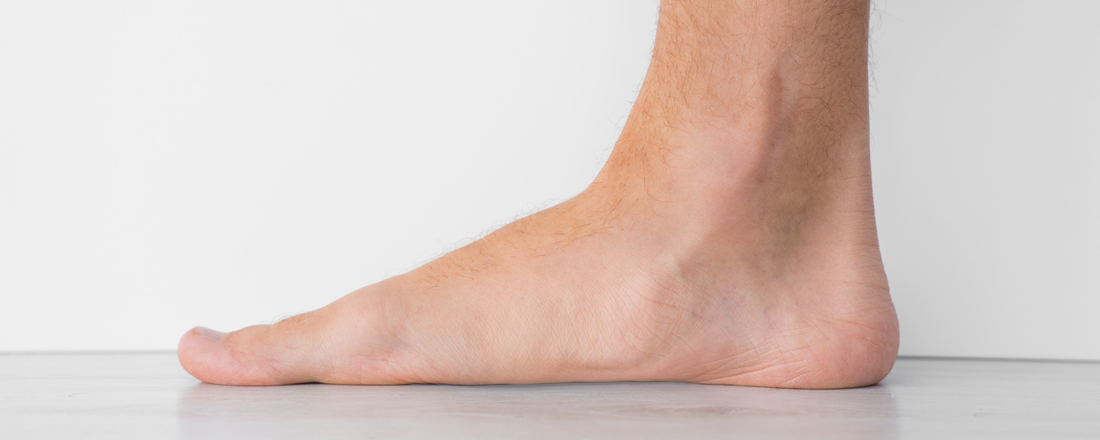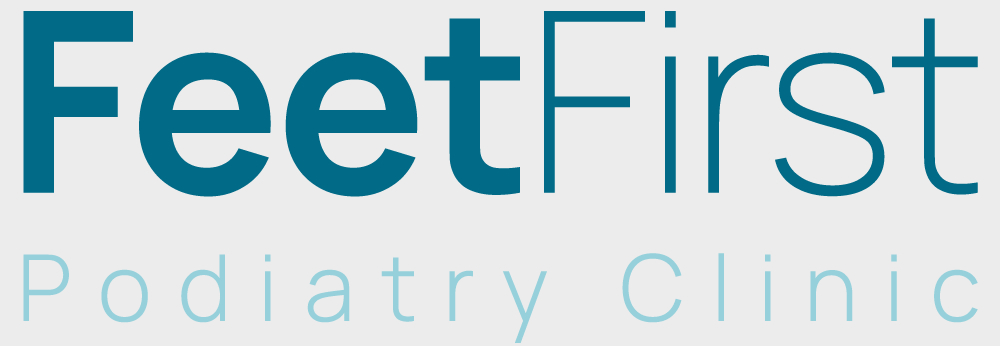
Foot Deformities
Podiatrists can offer many types of intervention for a whole range of foot deformities such as, but not exclusively:-
- Flat feet/fallen arches, pronation, hypermobility
- Pathaological flat foot
- Bunions (If painful or needing some prevention intervention)
- Painful toes or troublesome toe deformities such as hammer toes or clawed toes.
- Painful dropped metatarsal bones.
Flat feet/fallen arches
A flat or low arched foot is not considered abnormal and the height of the arch does not have any bearing on how well a foot can function. A foot that rolls in excessively (pronated) with most of the weight passing over the inside border may be a cause for concern and may be the cause of general foot pain, knee pain, hip pain and back pain.
Types of flat foot
1. Flexible
The foot is poorly aligned when a person is standing but when sitting with the weight off the foot the deformity usually corrects itself. It can be manipulated into a better position by hand.
2. Rigid
The foot remains in a poor position whether the person is weight bearing standing or not. It cannot be manipulated into a straight position by hand.
3. Pathaological flat foot
Some cases of flat feet that can be treated by podiatrists are more complicated and need more severe intervention.
Congenital (born with)
Tendon injuries, typically tibialis posterior (on the inside of the ankle)
Neurological and muscular diseases
Joint hypermobility
Abnormal joining of two bones (coalition) resulting in a rigid flat foot
Inflammatory Arthritis (e.g. rheumatoid arthritis)
Trauma or injury
Diagnosis
The diagnosis is made following an examination of the foot. In certain cases, further investigations may be required such as X-ray, ultrasound, MRI or CT. The podiatrist may offer treatments such as orthoses (inserts for shoes), exercises or manual therapy.
Click here to see our specialist treatments for Orthoses.
Click here to see our specialist treatments for Manual Therapy.
Early intervention for any injury usually has the best outcome.
This type of issue would need a musculoskeletal assessment which usually takes up to an hour.
Bunions
Bunion (AKA hallux valgus)
A bunion is a bony deformity affecting the main joint of the big toe. The medical term for a bunion is called hallux valgus. It is caused when the big toe tilts towards the second toe. The big toe position can worsen over time. Bunions are a common problem. They tend to run in families and are more frequent in women. They can be painful and buying footwear can become a problem.
What causes a bunion?
- Genetics, they are often hereditary
- Conditions such as osteoarthritis or rheumatoid arthritis
- In most cases it isn’t clear why bunions develop
Treatment options (not an exhaustive list)
- Orthoses (inserts for shoes that help to change the pressure on the feet)
- Manual therapy
- Toe separators
- Devices
- Correct footwear
- Surgery – an operation is only recommended as a last resort
Toe Deformities
Painful toes, clawed toes, hammer toes, hyperextended toes.
Toe deformities are common problems that occur due to abnormal positioning of the foot bones, inadequate biomechanics, and diseases such as arthritis affecting bones and tissues of the foot. Toe deformities not only affect the alignment of the bones, joints, and tissues in the foot, but may also affect alignment of the weight bearing joints such as the hips or knees resulting in further problems. The most common toe deformities are hammertoes, claw toes, and mallet toes and hyperextended toes.
Toe deformities are common problems that occur due to abnormal positioning of the foot bones, inadequate biomechanics, and diseases such as arthritis affecting bones and tissues of the foot. Toe deformities not only affect the alignment of the bones, joints, and tissues in the foot, but may also affect alignment of the weight bearing joints such as the hips or knees resulting in further problems. The most common toe deformities are hammertoes, claw toes, and mallet toes and hyperextended toes.
Causes
There are many causes of toe deformities. They can be congenital, present at birth, or can occur because of trauma such as fractures, dislocations, or ill-fitting footwear. Certain conditions such as diabetes, stroke, osteoarthritis, and rheumatoid arthritis affect the functioning of muscles and nerves and can cause tightening of ligaments or tendons resulting in these deformities.
Treatment
Initially, toe deformities are treated by conservative treatment measures to restore or maintain walking relieve pain and help to delay progression of the deformity. This may include padding, strapping, silicone devices etc.
Surgery may be recommended but is always a last resort.
Dropped Metatarsal Head
What is it?
A dropped metatarsal head is a condition wherein one of the metatarsal bones (usually the second metatarsal) is lower than the rest at the distal end.
What are the common symptoms/complaints?
Patients complain of pain and a sensation that they are walking on a stone or pebble. Callus often develops under the area of the dropped metatarsal as a result of pressure.
How is it caused?
This condition is very common and is almost exclusively hereditary. Over-pronation of the foot plays a role because abnormal weight distribution can offload too much pressure onto the second metatarsal and indeed the other metatarsal heads as well.
How is it treated?
The patient should be fitted with custom foot orthotics to correct any abnormal pronation. The orthotics should include a metatarsal pad under the dropped area, which will raise the area and alleviate pain.


